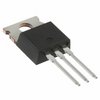-
The maximum safe operating area (SOA) for the IRF9Z24 is not explicitly stated in the datasheet, but it can be estimated based on the device's thermal and electrical characteristics. As a general rule, it's recommended to operate the device within the boundaries of the maximum voltage, current, and power dissipation ratings to ensure safe operation.
-
The junction-to-case thermal resistance (RθJC) for the IRF9Z24 is not directly provided in the datasheet. However, you can estimate it using the thermal resistance values provided in the datasheet. For example, the junction-to-ambient thermal resistance (RθJA) is given as 62°C/W. You can use the following formula to estimate RθJC: RθJC = RθJA - RθCS, where RθCS is the case-to-sink thermal resistance, which is typically around 0.5°C/W to 1°C/W for a well-designed heat sink.
-
The recommended gate drive voltage for the IRF9Z24 is not explicitly stated in the datasheet, but it's generally recommended to use a gate drive voltage between 10V and 15V to ensure reliable switching and minimize power losses. However, the optimal gate drive voltage may vary depending on the specific application and operating conditions.
-
The IRF9Z24 is a relatively slow-switching MOSFET with a typical rise time (tr) of 23ns and fall time (tf) of 17ns. While it can be used in high-frequency switching applications, it may not be the best choice for very high-frequency applications (e.g., above 100 kHz) due to its relatively high switching losses. It's recommended to evaluate the device's performance in your specific application and consider alternative MOSFETs with faster switching times if necessary.
-
To ensure the IRF9Z24 is fully turned on and off, you should provide a sufficient gate drive voltage and current, and ensure that the gate-source voltage (VGS) is within the recommended range (typically ±20V). You should also ensure that the drain-source voltage (VDS) is within the recommended range (typically up to 24V) and that the device is operated within its maximum current rating. Additionally, consider using a gate driver IC or a dedicated MOSFET driver to provide a clean and stable gate drive signal.
 IRF9Z24 datasheet
by Vishay Siliconix
IRF9Z24 datasheet
by Vishay Siliconix
Findchips
 IRF9Z24 datasheet
by Vishay Siliconix
IRF9Z24 datasheet
by Vishay Siliconix
 Findchips
Findchips